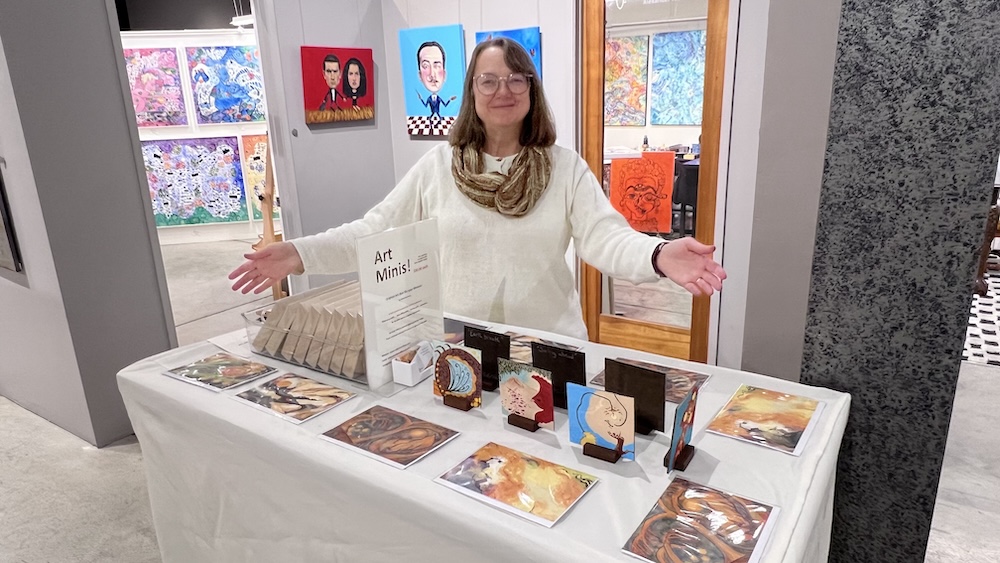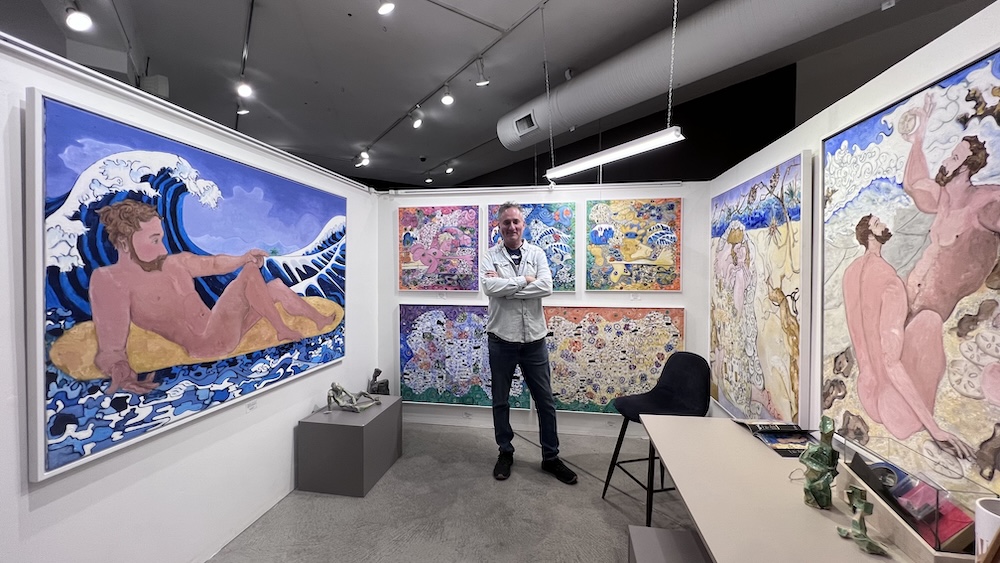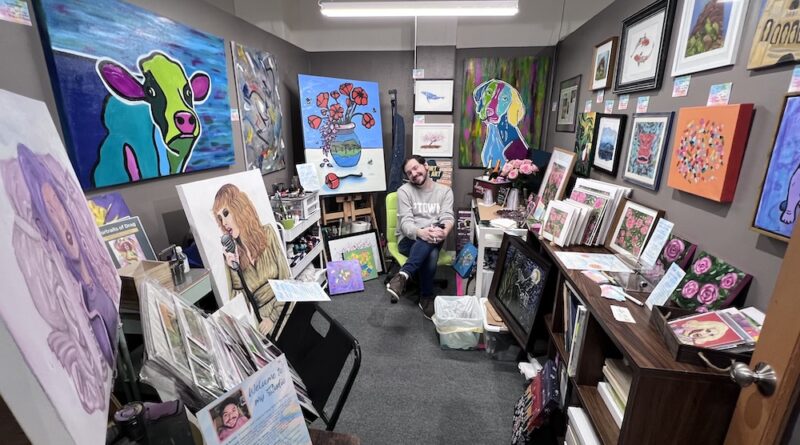Time’s Running Out: Why San Diego Must Step Up for LGBTQ Artists
By Patric Stillman
This piece departs from my usual reporting on San Diego’s art scene. It is written as an editorial, reflecting my perspective on the challenges facing independent artists and galleries in our community.
San Diego likes to boast about its vibrant arts scene. We have more than a thousand arts nonprofits across the county from museums to performing arts organizations to community centers. Yet as the banners fly and the grant announcements pile up, something essential is slipping away. Our independent art galleries. The very places where working artists cut their teeth, sell their first pieces, and tell the stories larger institutions often ignore.
The reality is stark. SD Art Advisory (Mission Hills), Emerald C (Coronado), and Trash Lamb Gallery (South Park) storefronts have recently closed or are in the process. Others are struggling.
“I got the grant!” is not something small, artist-run galleries or individual creatives get to shout. Funding overwhelmingly favors established nonprofits, while the small businesses and artist entrepreneurs who incubate local culture are left to navigate rising rents, shrinking audiences, and an economy that feels like a game of musical chairs with fewer and fewer seats left.
It is not just galleries feeling the squeeze. Working artists themselves face impossible odds. In the past decade, the number of working studio spaces in San Diego has fallen by more than half. Redevelopment has swallowed entire blocks where artists once painted, sculpted, and built community. The cost of renting what little remains has soared.
The patron base, too, has shifted. Older collectors are downsizing, redirecting funds toward other causes. Younger audiences, raised with little arts education and now inundated by AI-generated images online, often see creativity as free, instant and disposable. Social media, once the perfect tool to communicate directly with patrons, has failed artists with the increase in AI slop (low-quality digital clutter), shadowbans and algorithm fatigue drowning out authentic voices. Taken together, these forces leave artists uncertain where to focus their efforts.
For small galleries, every additional barrier between a passerby and a gallery door is one less chance to make a sale, to spark a connection, to survive. Short-term and long-term challenges are plentiful. Construction projects causing traffic congestion, empty neighboring storefronts and rising costs for parking meters, bus fares and parking lots challenge visitors. All while tourism dollars and public engagement in bars and restaurants continue to dip. The sense of isolation for galleries and artists compounds.
And yet, against the odds, creativity finds a way. New spaces like Woodward Contemporary in Old Town bring working studios and exhibitions under one roof, while Chula Vista’s Cultural Center has launched the city’s first artist-in-residence program. Established gallery, Sparks Gallery introduced its ‘Gateway to Galleries’ initiative helping artists navigate the realities of commercial representation. Earlier this year, Sparks Gallery, Adelman Gallery, Meyer Fine Art, and my own space, The Studio Door, came together for the inaugural Art Gallery Month, a rare collaboration that proved what is possible when independent galleries pool resources rather than compete for scraps.
At The Studio Door, we have long championed LGBTQ+ artists whose work is often overlooked. Galleries often fear queer themes may alienate patrons, while museums confine our stories to token shows instead of weaving them into the larger cultural fabric. For nine years, our annual PROUD+ exhibition has connected local LGBTQ+ artists with national peers and arts leaders, while Words of Pride, featuring 30 queer-identifying artists, will soon unveil a fourth panel at the North County LGBT Center. Along the way, we have partnered with San Diego Pride, Lambda Archives, Bears San Diego, SD Leather Community, Out Professionals, the San Diego Equality Business Association, the Tourism Authority and the San Diego History Center. All while keeping art conversations alive through my column in The WORD San Diego.

But visibility alone will not pay the rent or buy materials.
Supporting LGBTQ artists is not charity; it is cultural preservation. For generations, queer artists have chronicled lives that mainstream society tried to erase, offering future generations a record of love, resilience, and defiance. Today, the rising cost of living is pushing them out of studios. Social media has lost their direct conversations with patrons. And still, artists are asked to donate artwork for auctions while failing to purchase it for our lobbies, our offices, or our homes.
That must change.
Buying art, even a small piece, keeps creativity alive in our neighborhoods. Commissioning murals, attending exhibitions, sharing artists’ work online, mentoring emerging talent, advocating for arts funding. All of it matters. When local organizations build permanent collections, they invest in cultural memory instead of treating artists as one-time fundraisers. When audiences buy work directly from creators, they ensure those creators can afford to keep making it.
San Diego risks becoming a city without a visual LGBTQ representation for future generations, even in the heart of Hillcrest, “San Diego’s LGBTQ+ Cultural District,” if we do not act. We need community to come together to support artist-entrepreneurs, honor our local artists, and build an understanding that art is the heartbeat of our community.

When The LGBT Center purchased artwork for its renovated lobby a few years ago, it signaled what was possible. But it happened only once. Even paying the artists for the new mural at the Pride offices had to be privately funded as opposed to organizationally supported. Too often, artists hear from organizations only when free art or cheap murals are needed.
Our artists deserve more than that. The arts should be central to who we are as a city and as a community. They deserve to be seen, supported and collected. When we lose LGBTQ+ artists, we lose the storytellers who chronicle our history, identity, and resilience. The very voices that gives our community its cultural heartbeat.
It may be too late to mourn the galleries and artists we have already lost, but it is not too late to step up, to rethink how we support one another, and to recognize the essential role LGBTQ art plays in keeping our community alive and thriving.

